study of York County diverse communities grows
The situation
When Georg Sheets was writing his “To the Setting of the Sun” in 1981, he said community leaders pressured him to exclude three major York County stories from his book:
The Confederate invasion of York in which leaders surrendered the town in 1863, the Hex Murder of 1928 and the story of freedman William C. Goodridge in the early to mid-1800s.
He included them anyway.
The late York County author didn’t say why these stories carried opposition.
All three stories provided lessons for future generations. But the stories also bore elements of perceived embarrassment to the community. The surrender brought national criticism. Goodridge’s story included a trumped-up rape conviction and sentence in York County Court against his oldest son that required an act of Pennsylvania’s governor to mitigate. The Hex story, a murder involving perceived witchcraft and touching on issues of class, drew international attention.
The Confederate invasion and Goodridge’s stories also tied to issues of race. If a community doesn’t talk about the Civil War, it’s not going to discuss race, the war’s cause. A community that suppresses the achievement of Goodridge, a successful Black businessman and Underground Railroad operator in the 1800s, is leaving out a important part of its story.
In the major 100th anniversary observance of the Confederate invasion of the North that ended with the Battle of Gettysburg and included the surrender of York, the York Gazette and Daily merely republished an 1863 account of York’s occupation. The York Dispatch did not recognize the event.
An exception to 20th century Civil War studies – a work that gained little notice at the time – was Gerald Austin Robison Jr.’s master’s thesis: “Confederate Operations in York County.” It was completed a year after the 100th anniversary.
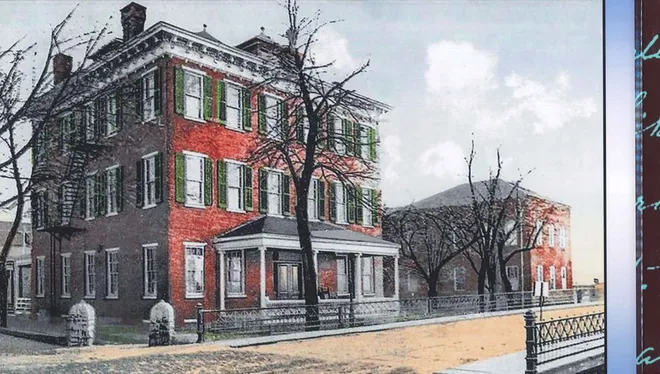
Things started changing on York’s Civil War and Goodridge studies in 1987 and 1988. And accelerated in 1999.
First, Sheets helped lead the installation of a blue-and-gold state marker in front of Goodridge’s former residence at 123 E. Philadelphia St. in 1987. This provided a high-profile acknowledgment of Goodridge’s life and times.
The next year, the 125th anniversary of the Civil War, scholar Mark Snell’s 1987 master’s work about the Civil War draft in York County received public airing, as did historian Tom Schaefer’s newspaper series about the Confederate invasion.
As part of anniversary observances, a good-natured mock surrender reenactment was staged at the York County Courthouse. Unlike his Civil War counterpart, the mayor – Bill Althaus – refused to surrender the city. York, thus, acknowledged this difficult moment that had been suppressed for much of the 20th century.
In the early 1990s, the York County History Center developed an exhibit at York’s main visitors site in Downtown York that told about York’s role in the Civil War and the surrender of York.
All this set the stage for 1999, right before the new millennium and, as it turned out, a new day for Black history studies in York County. That year served as an icebreaker for books about York County’s Black history. Indeed, it kicked off a number of initiatives relating to Black history studies that continue to this day.
John J. Jezierski published his landmark book about the Goodridge family, with a particular focus on businessman William C. and Emily Goodridge’s three sons, all pioneering American photographers.
Jim McClure’s general York County history “Never to be Forgotten,” published in 1999 as part of the 250th anniversary of the county, included important moments in county Black history and with stories about women and those of all classes top of mind.
In these years until today, about a half-dozen holders of graduate degrees from Penn State Harrisburg’s nationally recognized American studies program have brought the tools of scholarship into York County research – tools that work toward inclusive consideration of race, ethnicity, class and gender in research and writing.
This contrasts with the past practice of studying history locally and nationally that tended to research and write from a tops-down perspective. This resulted in incomplete, inaccurate histories. As just one simple but revealing example, George Prowell’s 1907 history of York County included illustrations of about 55 history makers of significance up to that time. There were no women or people of color among them.
Other initiatives followed early in the 20th century: Jim Kalish’s “The Story of Civil Rights in York, Pennsylvania: A 250 Year Interpretive History” was published in 2000. In those years, a York County History Center exhibit explored the Underground Railroad. Indeed, all these book-length works relied on the history center’s archives, particularly its hefty File No. 630 focusing on Black history. The York Civil War Roundtable began meeting at Borders bookstore and then later settled in its longtime home at the History Center.
In 2002, McClure’s book, “Almost Forgotten: A Glimpse at Black History in York County, Pa.,” was published as part of the 25th annual Conference of Black History in Pennsylvania, a multiday Pennsylvania Historical and Museum Commission event held in York. The manuscript was reviewed by Black senior statesmen Voni B. Grimes, Wm. Lee Smallwood and Ray Crenshaw, all of York. McClure followed with “East of Gettysburg: A Gray Shadow Crosses York County, Pa.,” a book about the county before, during and after the Civil War with details about the surrender of York.
In 2005, the History Center published its first book devoted to Black History, Daisy Myers’ autobiography, ‘Sticks ‘n Stones: The Myers Family in Levittown.” The History Center updated and republished the out-of-print book in 2021.
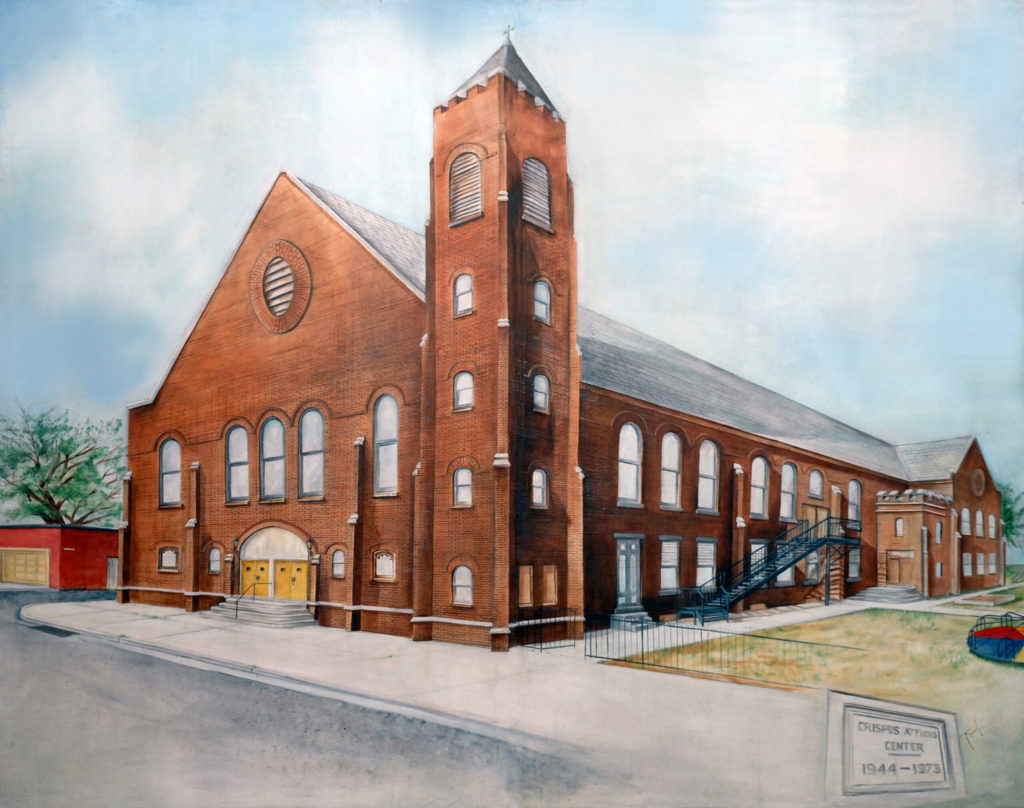
In those days, Smallwood furthered interest in the Underground Railroad by portraying Goodridge in 1800s costume. Smallwood’s interest in Black history reached the public stage in 1991, when he published a manuscript collection on the topic as part of the 250th anniversary of York city.
In the past 15 years, Black history studies have accelerated. Some examples:
-Jeff Kirkland’s longtime extensive research, writings and presentations have added to public understanding of everyday life in the Black community – a community he grew up in – in the 20th century. He also wrote a book about Crispus Attucks Community Center, the influential South Duke Street organization, founded in 1931 to provide recreational and social center for the Black community.
-The Friends of Lebanon Cemetery are restoring this historically Black cemetery in North York. Significantly, this group is telling stories about those buried in this 1872 cemetery. In fact, the Friends are leaders in the rediscovery and restoration of historically Black cemeteries in the region.
-The history center brought on Ophelia Chambliss to foster the Black community’s sharing of its history and to work on other diversity and inclusion projects.
-Bryan Wade has produced Keystones Oral Histories documentary videos with curriculum on noteworthy Black military men and women with county ties and is in production on a similar project about Central Pennsylvania in the Underground Railroad.
-And importantly, Civil War historian Scott Mingus’ extensive writings include about 15 books that cover the war and the Underground Railroad in York County, in full or in part. His history center-published “The Ground Swallowed Them Up” is the first book-length exploration of the Underground Railroad in the county. His work has stimulated interest about York County Civil War history, locally and nationally.
So, Civil War studies are now a leading part of history discourse in York County – instead of a disregarded piece of our past.
+++
Crispus Attucks Community Center plans a history and culture center on its South Duke Street campus designed to weave together these threads of Black history.
And the center will include Latino history.
Historical work about the Latino community, the county’s largest minority group, has been gaining traction. For example, the York Daily Record published two multiday series on this fast-growing group in 1989 and 2007. The history center’s Journal of York County Heritage for the years 2020, 2021 and 2022, included stories about Latino pioneers and leaders in a group that started growing in significant numbers in the 1950s.

+++
The body of work on Black history is so significant that one is pressed to know which resources to go to first. The annotated list below is designed for that purpose. This bibliography also shows increasing works on Latino history:
The witness
Annotated links to lists and stories about Black/Latino history resources:
-Summary of the York race riots and trials 30 years later: York, Pa., race riots: What happened in the 1968-69 riots? (ydr.com).
-The story of an 1803 uprising: York County’s Conspiracy of 1803: A troubling story (ydr.com).
-A aggregated list of Black history resources: York Black history – Witnessing York
-An list of Latino history resources: York Latino history – Witnessing York
-A diverse aggregation of women from history: York Women’s history – Witnessing York
-This was previously aggregated as a bibliography about York County Black history resources: Resources to learn about black history, culture in York County, Pa. – York Town Square (yorkblog.com)
-Historian Jeff Kirkland receiving a prestigious York County History Center Award: (12) Facebook. (For a feel of discourse in York County’s Black community, see Kirkland’s Facebook page: (12) Jeff Kirkland | Facebook.)
-These are numerous posts about Black history in the 19,200-member local history Facebook group, the YDR’s Retro York: (13) Retro York | Facebook.
-To get a sense of about 30 cultural/history projects underway concurrent with the Crispus Attucks history culture center – some touching on Black and Latino history, in full or in part – check out these lists: Big, important York County history, cultural projects picking up steam (ydr.com) and These key projects would boost quality-of-life in York County (ydr.com).
-This is an overview of a merger between the Black Faith Presbyterian and white First Prebyterian Church in the 1960s, an across-the-grain event: First Presbyterian – Long tie with race and racial justice – Witnessing York.
-This YouTube series features episodes on Black history, e.g., Underground Railroad, interview with Lt. Col. Sandra Stockton: (2) Hometown History: Jamie & Domi’s YoCo Backstory – YouTube.
-Bryan Wade presents about Keystones Oral Histories with a demo by Jamie Noerpel about how the associated curriculum can be used.
-These sources are rich in Black history content and sometimes overlooked: Jeffrey Hawkes Master’s thesis, “J.W. Gitt’s Last Crusade,” Lewis Miller’s “Sketches and Chronicles,” the York County 250th Anniversary Commission’s “250th Chronicles,” Franklin W. Zarfoss’ “Bits and Bytes of Trivia and Facts, Churches of York County, Pennsylvania,” and York Gazette’s histories of the Black community: Nov. 24, 1907; Oct. 5, 1912; and Sept. 17, 1924.
– WitnessingYork.com tells stories of York County people and places that are sometimes not well known or well considered. These stories often tell of struggle and the lengthy journey toward resolution.
-Delma Rivera gives this overview of York County’s Latino history: (1) Writers’ Roundtable 6-3-2021 – YouTube
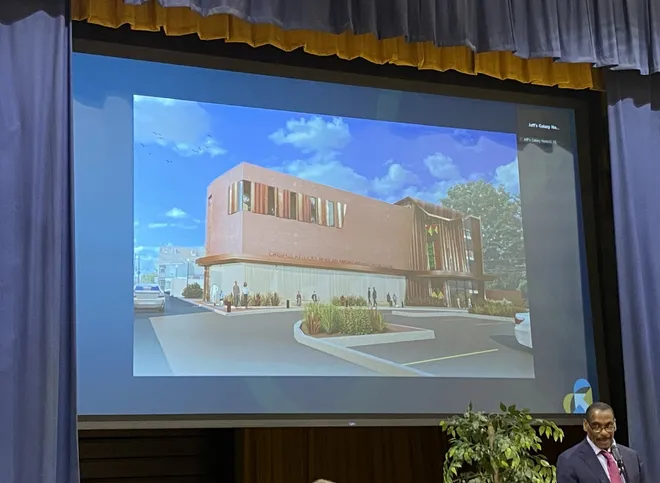
Books and publications:
-Jeff Kirkland’s book “Crispus Attucks Association: 85 Years of Community Building, 1931-2016.” Available at Crispus Attucks Community Center.
-James McClure’s “Almost Forgotten,” a 2002 book about Black history in York County. The back matter contains three newspaper articles that provide perhaps the best record of Black history in the 1800s: Online purchasing (yorkhistorycenter.org).
-Scott Mingus’ “The Ground Swallowed Them Up” is the authoritative book on the Underground Railroad in York County: Online purchasing (yorkhistorycenter.org). It also provides a history of York County Black history in the 1700s. (History Center, pub.) Also, Mingus’ “Guiding Lights” focuses on the station masters in York County’s Underground Railroad, including about five Black conductors: Online purchasing (yorkhistorycenter.org).
-John Vincent Jezierski’s “Enterprising Images” is the most scholarly study yet of William C. Goodridge and his three sons, all pioneering photographers: Amazon.com: John Vincent Jezierski: Books, Biography, Blog, Audiobooks, Kindle.
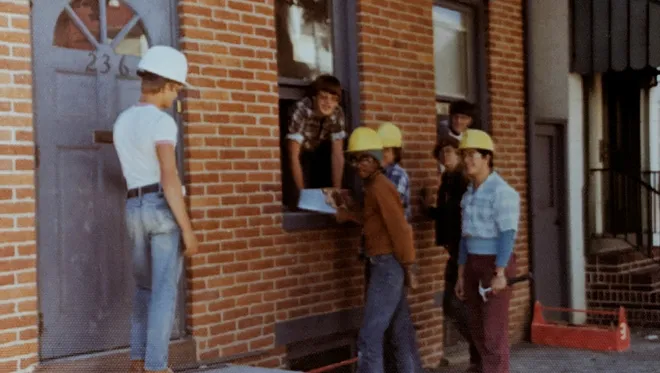
-Daisy Myers’ “Sticks n Stones,” the memoirs of this civil rights hero: Online purchasing (yorkhistorycenter.org) (York County History Center, pub.)
-Sandra Stockton’s “480 Codorus Street” is a three-book story about coming of age in York’s Black community in the 1960s: Online purchasing (yorkhistorycenter.org)
-Voni B. Grimes’ “Bridging Troubled Waters” is a memoir of man who came to York from the South in the Great Migration and became one of the most respected men in York County: Online purchasing (yorkhistorycenter.org)
-The annual Journal of York County Heritage, published by the York County History Center, contains many stories about Black and Latino history: The Journals of York County Heritage Bookcase – Flip Book| PubHTML5. This issue of the journal is devoted to the York race riots: 2019 Journal of York County Heritage (pubhtml5.com)
-William Lee Smallwood’s “York’s 250th Celebration, 1741-1991, African Americans of Note,” is a manuscript collection that brings together documents that explain York County’s Black history. The celebration also produced a calendar, compiled by members of the Black community, about sites linked to York County’s Black heritage. The sites appear in “Almost Forgotten.”
-York College’s Peter B. Levy’s “The Great Uprising: Race Riots in Urban America during the 1960s” compares York’s race riots to riots in two other cities – Baltimore and Cambridge, Md.
-Kim Strong’s accessible longform narratives in the YDR about the riots-era deaths of Lillie Belle Allen – “Silent No More” and “Henry C. Schaad” – “As He Lay Dying.”
-George Shumway’s “Charrette at York, Pa.,” details this community-wide event in April 1970 that spawned reforms in housing, transportation and health care deficits advocated by the Black community for years.
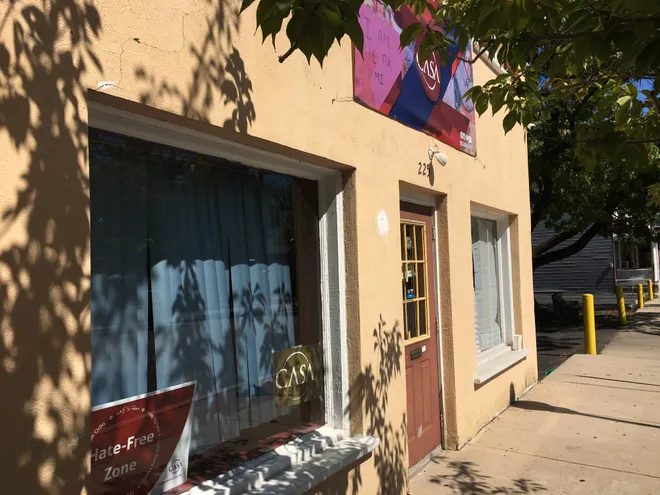
Recommended: About Crispus Attucks Community Center
-A 30-part series by Ted Sickler and James McClure about CA, after going through CA’s archives: Crispus Attucks anniversary special section (ydr.com)
-This gives links to stories with insights into Bobby Simpson, which include his mentor Frederick D. Holliday’s remarks to CA in 1975 and Simpson’s thoughts upon Holliday’s death: Retro York | A young Bobby Simpson met with his mentor Frederick Douglass Holliday, York schools superintendent from 1974-81, every week for years | Facebook.
-This is intended as a primer of CA’s early history, with a list of links relating directly to CA: York’s Crispus Attucks in ‘character building’ business – Witnessing York.
-Much good work is underway in not only restoring the historically Black Lebanon Cemetery but also researching those buried there. The Friends of Lebanon Cemetery are spearheading this initiative: Friends of Lebanon Cemetery.
Note: James McClure, author of this piece, and Jamie Noerpel, who operates this site with McClure and edited this story, are products of Penn State Harrisburg’s American studies master’s program. Noerpel went on to earn a doctorate in that program.
The questions
During the Civil War mock surrender reenactment, Mayor Althaus altered actual historical events. Instead of giving the city to the Confederates, he refused to back down. In this way, he righted a wrong our forebears made decades before us. You could say that he used humor to break the ice on a sensitive moment in history. You could also say he altered the truth and inaccurately represented the past. What are the positives and negatives of decisions like this? When is it okay to misrepresents the facts for the betterment of a community?
Related links: WitnessingYork.com indexes to stories, resources about Black, Latino and women’s history. Photo credits: From top, Jeff Kirkland, Crispus Attucks Community Center, Jim McClure, York Daily Record, McClure.
— By JAMIE NOERPEL and JIM McCLURE

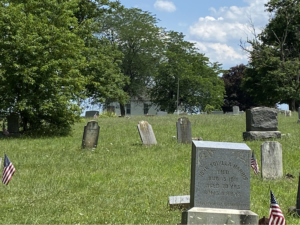
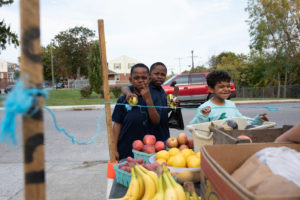
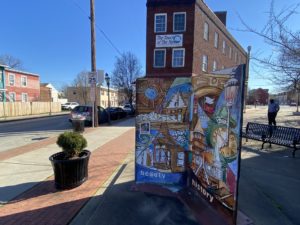
Pingback: Their segregated sanctuary prospered, and then disappeared - Witnessing York
Pingback: Hometown History - York County, Pa., places, S.3 - Witnessing York